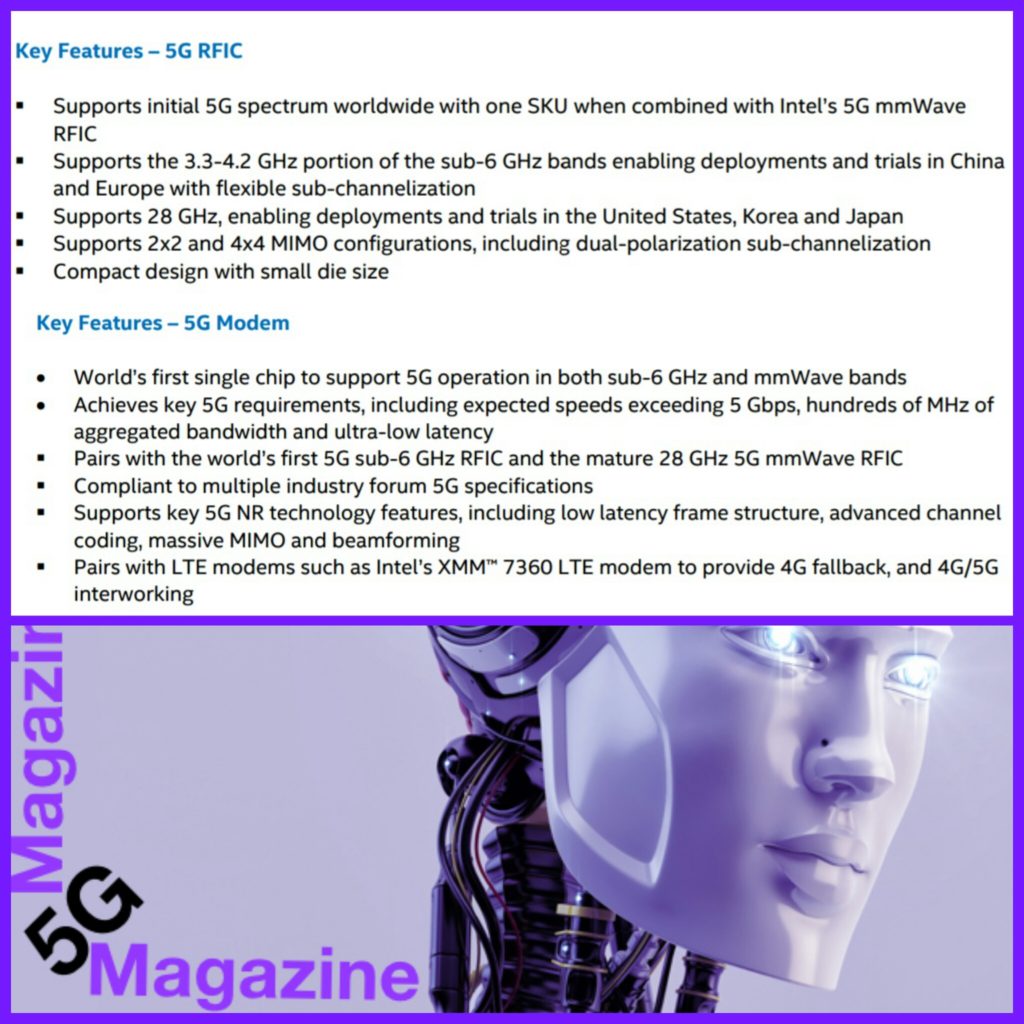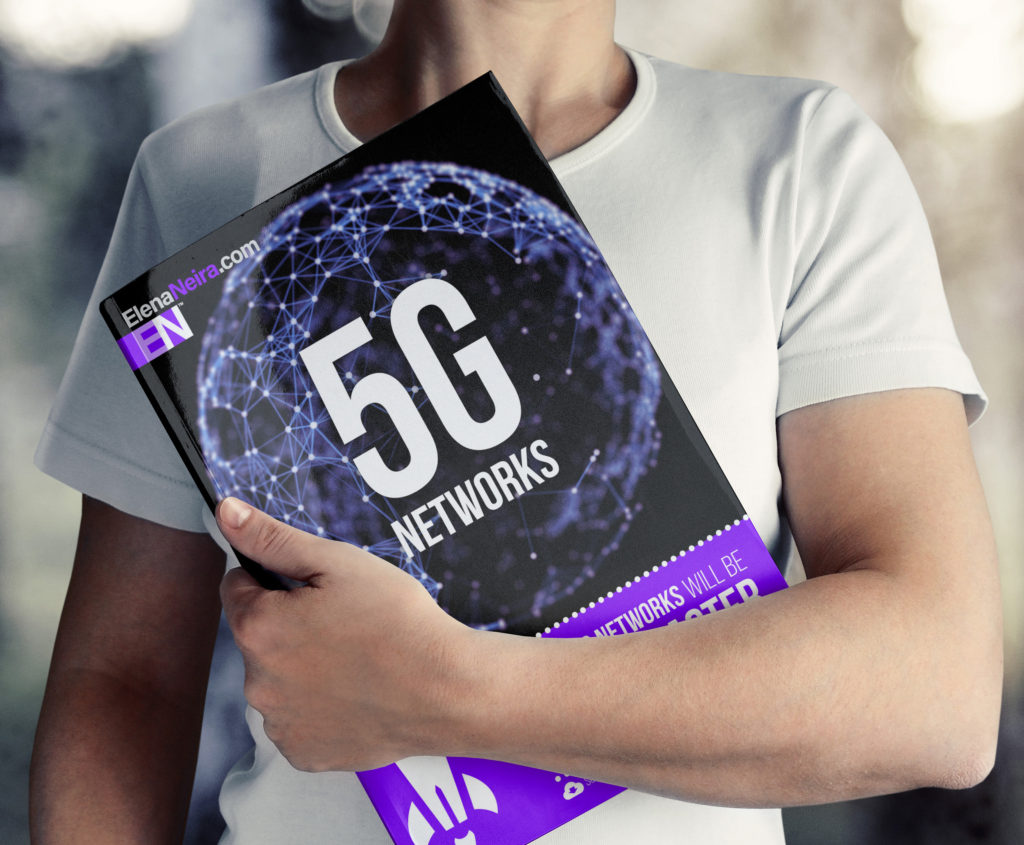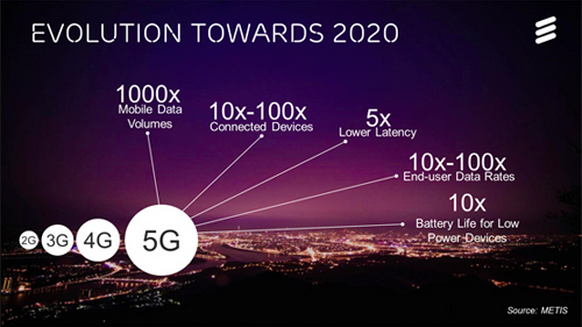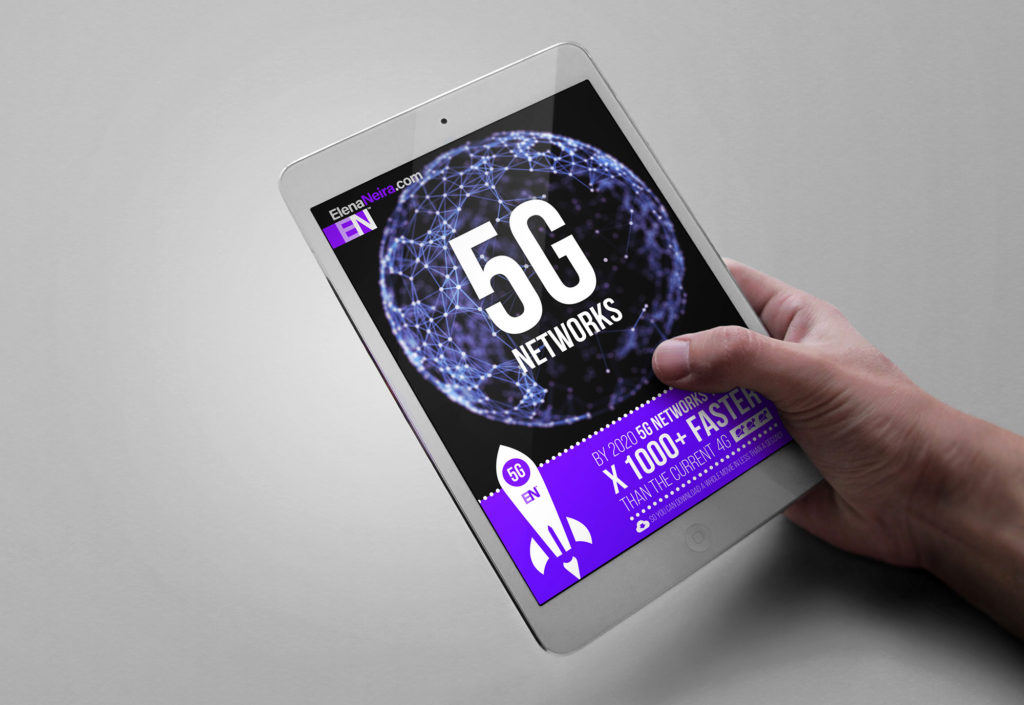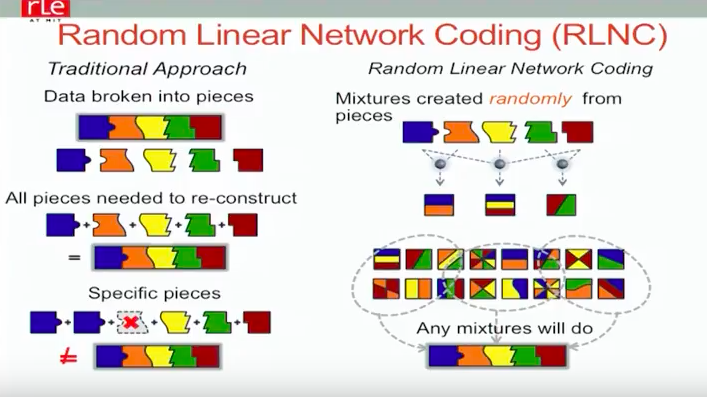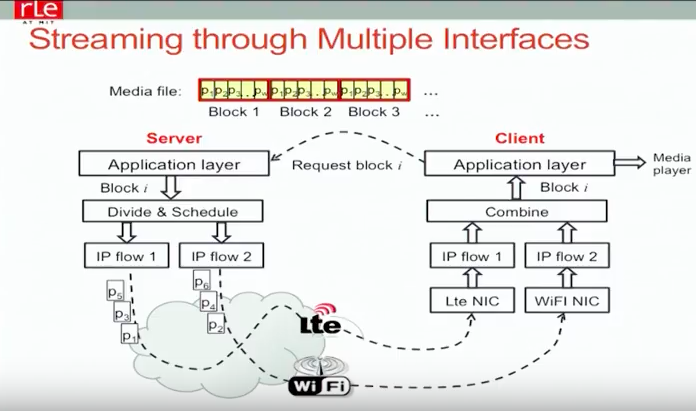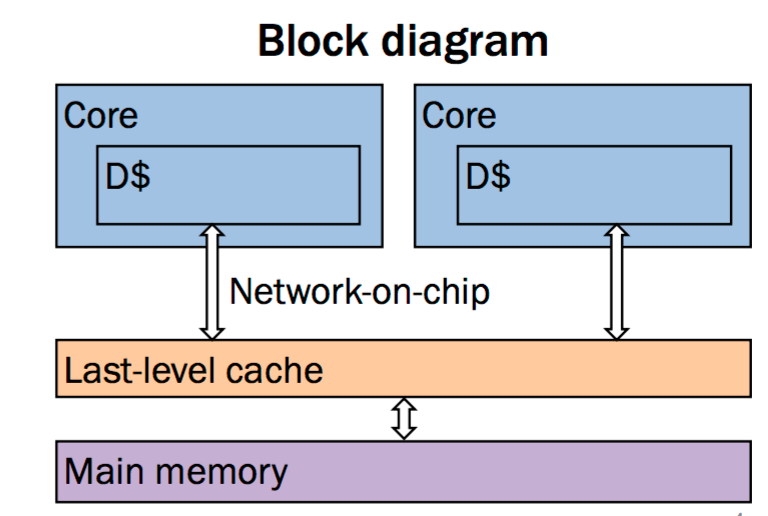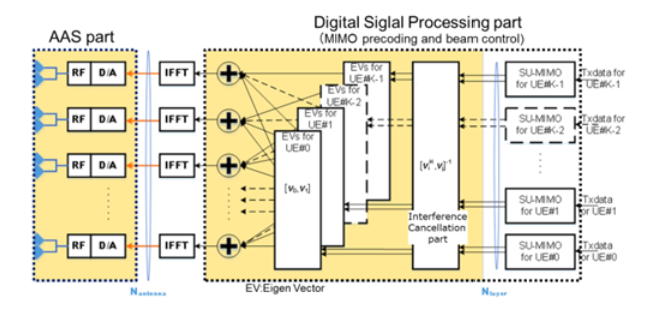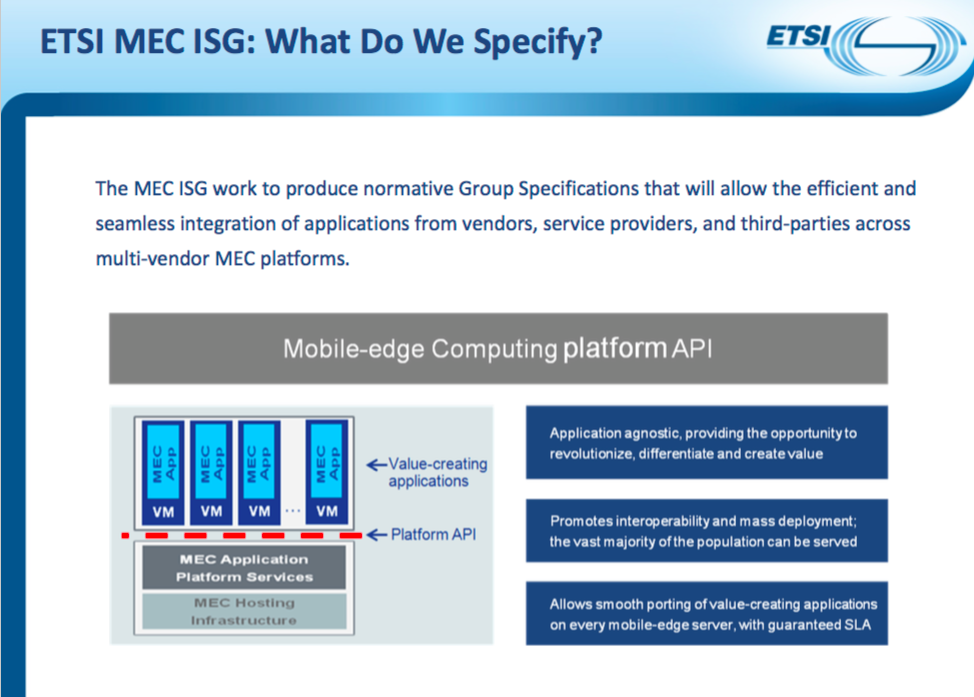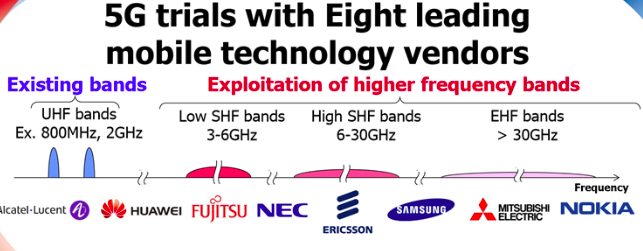Happening in 5G, AT&T with Intel and Ericsson kick off 5G trials aim at enterprise use cases; startup VisBit shows off Mobile AR, VR, 3-D Video; at MIT, work to incorporate Network Coding for 5G virtualization; In Europe, Huawei is behind the latest 5G deals with BT for research in areas covering from basestations to network slicing, and with FastWeb for the first 5G MVNO using smallcells; Finally, 5G mmWave links in the 60 GHz band being tested in San Diego reach up to a record 800 meters, and deliver content to eight homes at a time at up to 300 m coverage.
“Mobile Is a Shifting Landscape, Know the Terrain” – 5 Things Happening in 5G

AT&T with Ericsson & Intel Trials 5G Enterprise Markets
AT&T has launched what it calls a 5G business customer trial. It is partnering with Intel, which is hosting the trial in one of their offices in Austin, and with Ericsson. AT&T is saying that the trial delivers more than a gigabit per second bandwidth, enabling Internet access, VPN, Unified Communications apps and 4K HD video streaming. The ultimate goal is to look at future enterprise use cases of 5G VoIP in the 15GHz and 28GHz spectrum bands to validate how millimeter wave (mmWave) powers a 5G network experience. The trial builds upon a prior first public 5G demo featuring streaming 4K HD video, real-time camera feeds and reaching speeds of nearly 14 Gbps conducted with Ericsson. Now, AT&T is taking that demo and exploring what benefits it can provide to real-world business customers. “The future of video is mobile. And the future of mobile is video,” said Tom Keathley, senior vice president, wireless network architecture and design, AT&T. “Mobile video streaming continues to be a vital aspect of our 5G work, and this trial gives us an opportunity to test 4K HD video streaming across further physical distances between pieces of equipment. With our 5G and 4G LTE advancements, we expect speeds rivaling what we see from cable providers. Our path to 5G will help make this vision a reality faster.”
Source: AT&T News Room

AR, VR & 3-D Video CordCutting with WiFi, LTE Today, with 5G Tomorrow
Today’s AR, VR and 3-D Video experiences are largely tight to fixed platforms like consoles, TVs and PCs. However these experiences are migrating to mobile platforms to provide mobile experiences like AR game PokemonGo. Startup Visbit is one of the companies that during the VRX Conference (December 8-9, 2016, San Francisco) was showcasing 3D-Video, VR and AR experiences in mobile platforms. The company said that they already stream 4K HD and 3D-Video to mobile devices over WiFi and LTE with “near zero latency” and they achieve this with focus on managing view-switch latency. This type of latency is defined in the context of 3D Video foveated streaming/rendering. Both Oculus Dynamic Streaming and Visbit “View Optimized Streaming” belong to foveated streaming. In foveated streaming, the visible section of a 360º video is streamed in high resolution, and the non-visible section in low resolution. If the user turns the head, that low resolution stream is switched to high resolution.
For immersive mobile AR,VR and 3D-Video streaming in real-time as envisioned in some 5G use cases, additional type of latencies need to be considered, and the most important is Motion-to-Photon. This latency refers to the time it takes an image to match the movement of a user. Ideally, this time would be 0 msec. for a flawless user experience, in reality Today’s mobile platforms aim at approximately 16 msec. To move this number closer to the ideal 0 msec., device, content delivery (video player streaming the content) and network platforms need readiness. Visbit’s LTE capability shows great progress towards realizing this readiness in 5G.
Source: VisBit, VRX2016

Virtualization in 5G with Network Coding
MIT is looking at a new approach to virtualization that combines Software Defined Networks (SDN) ,Network Function Virtualization (NFV), Content Centric Networks (CCN), WebRTC, wireless mesh networks, reliable Multicast, and many more with a new technology called Network Coding (NC) for 5G. NC is a new paradigm that breaks from the store–and–forward approach currently used in communications networks. NC allows intermediate nodes in the network to recode incoming data packets, thus providing a store–code–forward paradigm. This ability to code within the network contrasts with traditional end-to-end erasure correcting codes such as Reed-Solomon, LT codes, and Raptor codes, and gives networks the ability to generate redundant packets where they are needed instead of injecting them end–to–end as other erasure codes would do.
This new Network Coding paradigm would require redesign of network protocols, and researchers have already started looking at practical implementation aspects of adding network codes to the future Internet and 5G network protocols and tools. There is already a real-world prototype that uses OpenStack and OpenFlow on the SDN side, and the Kodo Library on the NC side. The prototype shows NC’s capabilities to mask packet losses in the network on single and multi path transmissions. Comparing the results to standard TCP and Multi–Path TCP (MPTCP) as specified by IETF, it shows attainable 3 to 11 fold gains in terms of throughput and reliability even with moderate losses on single–hop, multi–hop, and multi–path scenarios.
Source: Massachusetts Institute of Technology

Huawei Inks 5G Deals with UK’s BT and Italy’s FastWeb
UK’s British Telecom (BT) and Huawei have announced that they will work together to research various 5G topics, including: network architecture; a new air interface between devices and base stations; ‘network slicing’ – which will allow operators to allocate network resources to specific services; machine-to-machine communications in Internet of Things (IoT) applications; and security technologies. “We are determined to maximise the potential of 5G for our customers, so collaborative research has a key role to play as the technology develops. This partnership with Huawei will see us explore the potential uses and make sure 5G is designed to meet the needs of our consumer and business customers throughout the world” said Gavin Patterson, CEO of BT. Italy’s MVNO Fastweb has announced that as part of its plans to exploit 5G technology for fixed wireless, it plans to make use of small cell technology to build a “5G ready” network with a fiber backhaul for 5G small cells (mini-basestations) placed throughout cities. FastWeb has inked a deal with Huawei for the provision of these 5G small cells. Fastweb is planning to cover 5 million households with the technology by 2020.
Source: British Telecom, UBB2020

5G mmWave 60 GHz Link Reaches up to 800 Meters
University of California San Diego is announcing the world’s longest bidirectional phased-array link in the 60 GHz band. At a link distance of 300 m, the 32-element array achieved 2 Gbps over all scan angles up to ±45 degrees. Data rates were 4 Gbps at 100 m and 500 Mbps at 800 m over most scan angles. A leading wireless operator is suggesting the system can deliver content to eight homes at a time at up to 300 m. The entire phased array consumed just 3-4 Watts of DC power due to the high-performance system-on-a-chip (SoC) designs UC San Diego created using the third-generation silicon germanium BiCMOS. “This is the second time UC San Diego has worked with Keysight to demonstrate high-performing phased-array 5G communication links, now achieving gigabit-per-second speeds at previously unimagined ranges and with extremely low power consumption,” said Gabriel M. Rebeiz, member of the U.S. National Academy of Engineering, distinguished professor and wireless communications industry chair at the UC San Diego Jacobs School of Engineering.
Source: BusinessWire
Issue No. 7 – 5 Things Happening in 5G sifts through reliable sources to bring you carefully selected, buzzworthy, and focused biz, tech, and market trends.
Find us also in Facebook, Google+, Instagram, Medium, and Twitter. For partnerships, inquiries, please contact us at social media(at)5g-magazine.com.
© 2016 www.5g-magazine.com – All rights reserved. Use of this Web site signifies your agreement to its Terms & Conditions.
